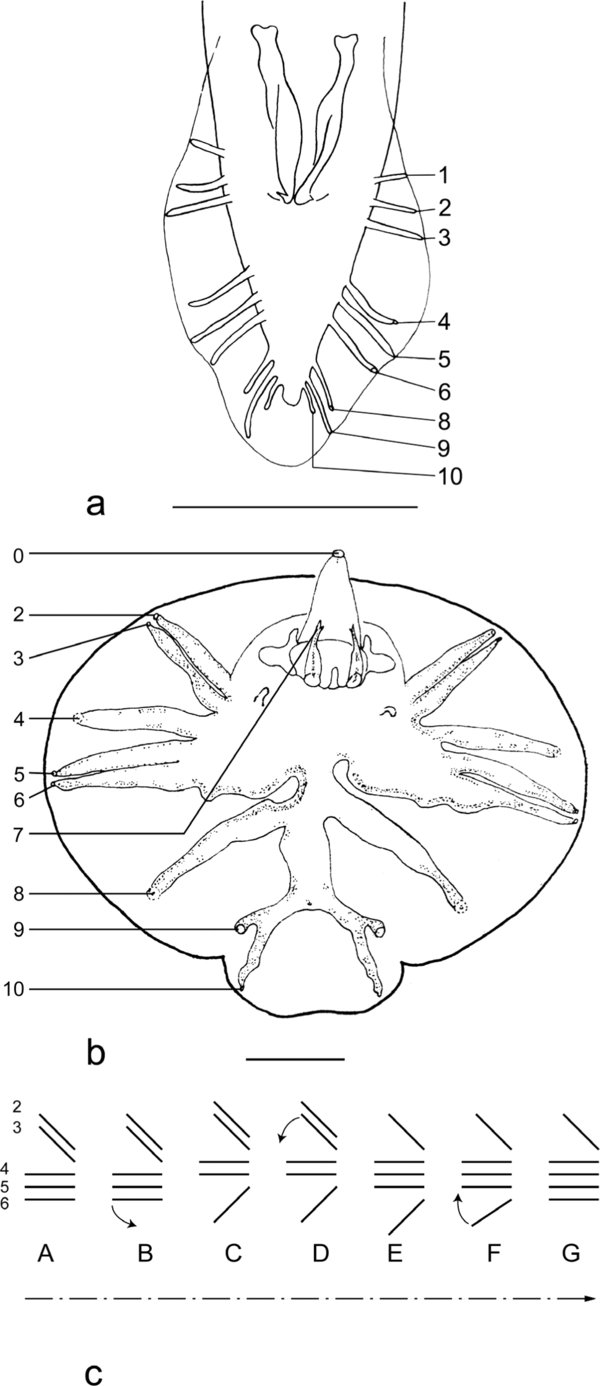Fig. 5

Download original image
Figs. 5a-b
Homology of the bursal rays of the Rhabditida and the Strongylida. Scale-bars: 50 μm.
a. Bursal rays of the Rhabditida sensu Osche (1958). Papillae 7 are fused with papillae 8. After Osche (1958), modified.
b. Bursal rays of the Strongylida sensu Chabaud et al. (1970). Papillae 7 are situated on the genital cone. After Chabaud et al. (1970), modified.
Fig. 5c
Schematic representation of the bursal patterns of rays 2 to 6 showing the hypothetical evolutionary steps.
From the basal pattern of type 2-3, the evolutionary steps follow the direction: 2-3 tending to 2-2-1 to 1-3-1 to 1-4 with the intermediary patterns: 2-3 tending to 2-2-1, 2-2-1 tending to 1-3-1, 1-3-1 tending to 1-4. Some lobes have a pattern of type 2-2-1 t 1-4. A. Type 2-3. B. Type 2-3 t 2-2-1. C. Type 2-2-1. D. Type 2-2-1 t 1-3-1. E. Type 1-3-1. F. Type 1-3-1 t 1-4. G. Type 1-4. The small arrows indicate the transition from a type to another. The dotted arrow indicates the hypothetic evolutionary progress of the pattern of the caudal bursae.
Current usage metrics show cumulative count of Article Views (full-text article views including HTML views, PDF and ePub downloads, according to the available data) and Abstracts Views on Vision4Press platform.
Data correspond to usage on the plateform after 2015. The current usage metrics is available 48-96 hours after online publication and is updated daily on week days.
Initial download of the metrics may take a while.


